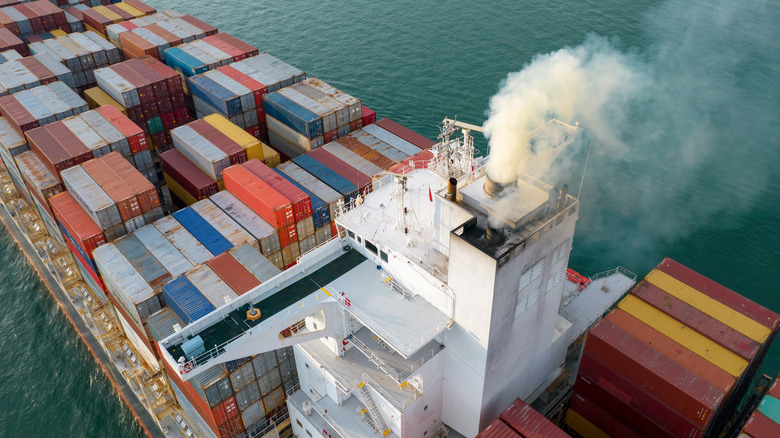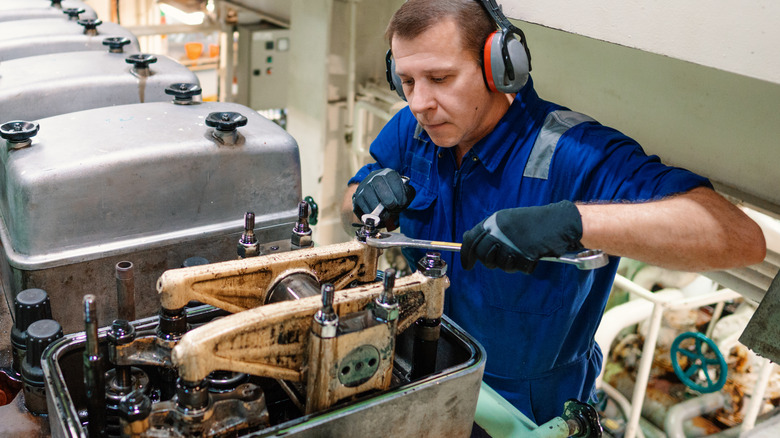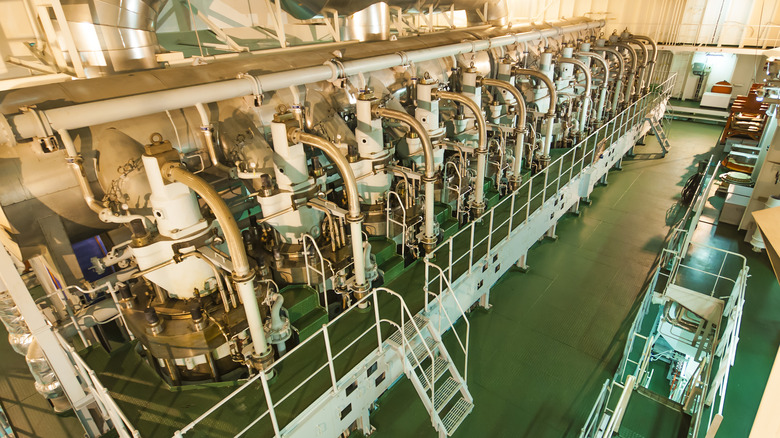Here's How Massive Container Ship Engines Are Made
Something many of us might take for granted is the idea that, generally speaking, large vehicles require proportionally large engines to move them. Or rather, the larger an engine gets, the more power it has behind it — and thus the heavier loads it can handle.
It mostly comes down to proportions. A small engine with small parts creates small explosions (necessary for combustion engines), while larger engines and larger parts create larger explosions — more power. The flipside to that added power is the need for more fuel to getting and keeping it all moving in the first place.
Another thing you may not usually think about is the amount of power and force needed to move large container ships and their cargo, which can reach lengths of over 1,000 feet, and carry over 20,000 individual shipping containers. The engines used on these vessels need to be big. Like, terrifyingly big.
Approximately three stories tall, producing up to 43,000 horsepower big. For comparison, the average modern car engine manages around 180 to 200 horsepower. So how exactly does an engine that gigantic and powerful get made?
Starting small(ish)
To an extent, the construction of these massive ship engines aren't all that different from other more typically-sized combustion engines. Many of the components — pistons, crankshafts, etc. — are the same, and the engines themselves are mechanically fairly simple. It's just that they also need to be many, many times larger, and that's where things get complicated.
All of the parts have to be built individually, since they're not mass produced like your average engine parts due to their scale. Many of the smaller (and some larger) components are cast as solid pieces of metal, usually using tough materials like iron or steel. Parts like the crankshaft of a container ship can take weeks to produce. Every piece, no matter the size, also needs to be precise — any imperfections, structural weaknesses, or misalignments could spell big trouble for the engine itself; and by extension, the ship it's housed in.
This process is similar to other parts manufacturing, but a whole lot bigger. Various parts have pre-constructed molds, with melted metals being poured into the mold and set. Then the pieces are extracted after hardening, closely inspected for issues or imperfections, after which they're further cut down and reshaped until they're ready for assembly.
That final step is usually handled via pre-programmed instructions in a large automated milling machine, because reshaping all of these parts by hand could take a crew months to finish. Once all the parts are complete, it's time to build the engine itself.
Building bigger engines
Assuming all of the thousands of individual components pass inspection (making sure the precise shape and finish are more-or-less perfect), assembling the engine is pretty similar to putting together something car-sized. The only exception is everything becomes several times larger, which makes the process more complex and involved.
The larger parts are often so big and heavy they can only be moved via cranes and other heavy-lifting machinery. Then once they're in place, they can be bolted down as needed. That said, precision and careful maneuvering is just as important during this step in order to get all of the disparate elements lined up and attached correctly — something that can take several weeks for a team of thousands to pull off.
Even then, the process isn't quite finished, as the completed engine still needs one final inspection to make sure everything is in its proper place and is secure. The engine is sent off for one more round of additional testing: Much of the process is automated, with computers performing a series of checks on various parts and processes, as well as simulating rough sea conditions and other potential strains by running the engine while rotating it at various extreme angles.
Though in some cases workers will physically enter parts of the engine (such as the piston compartments) to check for cracks, misalignments, jamming risks, etc. After which point, the engine is finally sent off to be installed in its designated ship.


